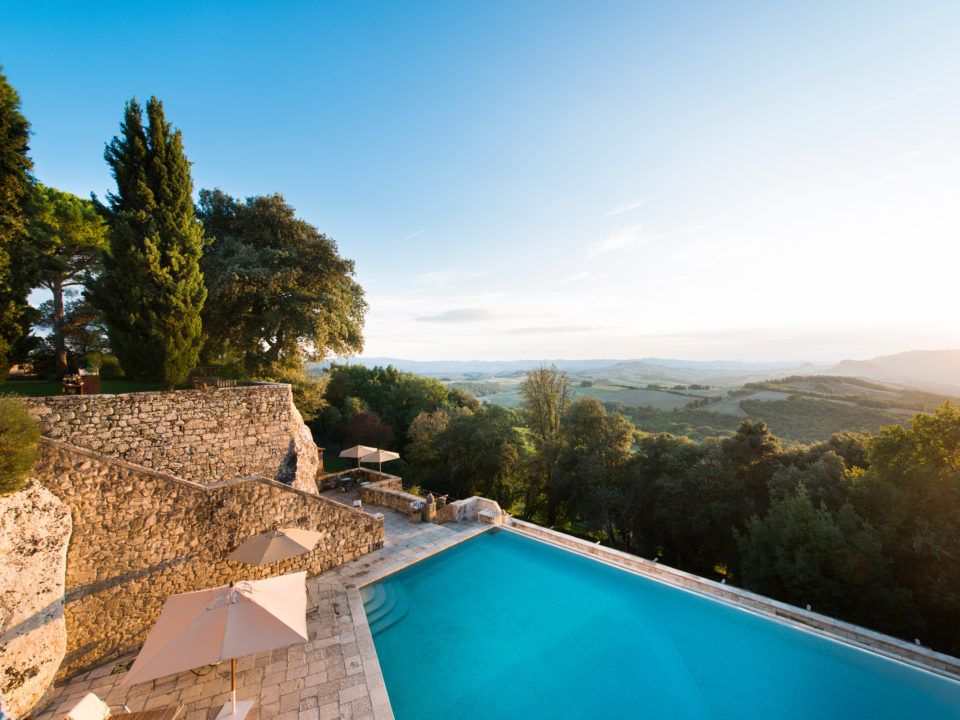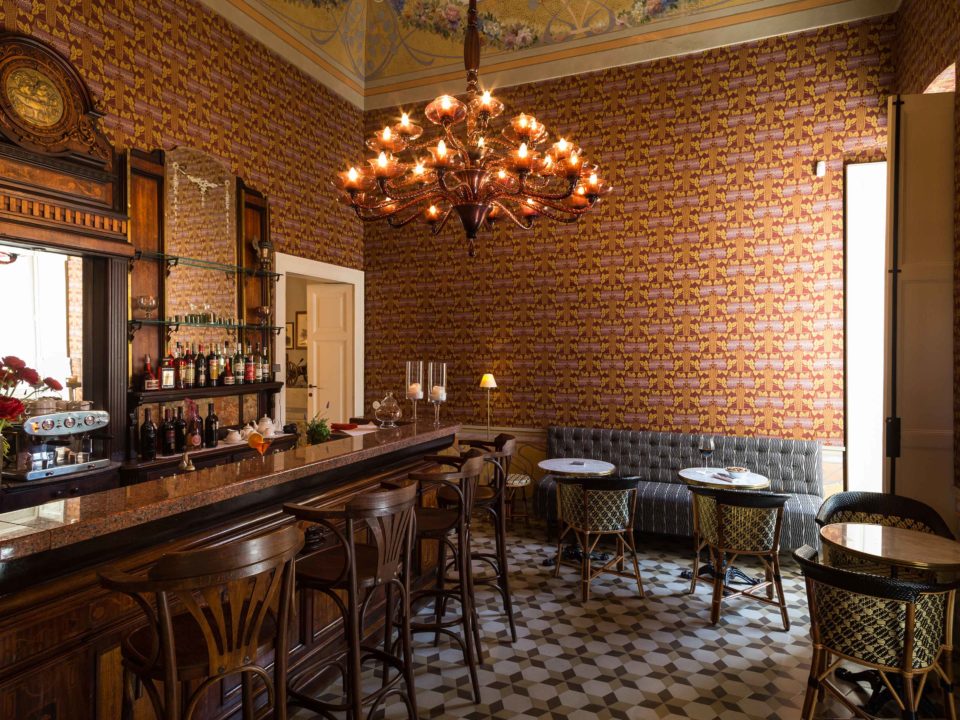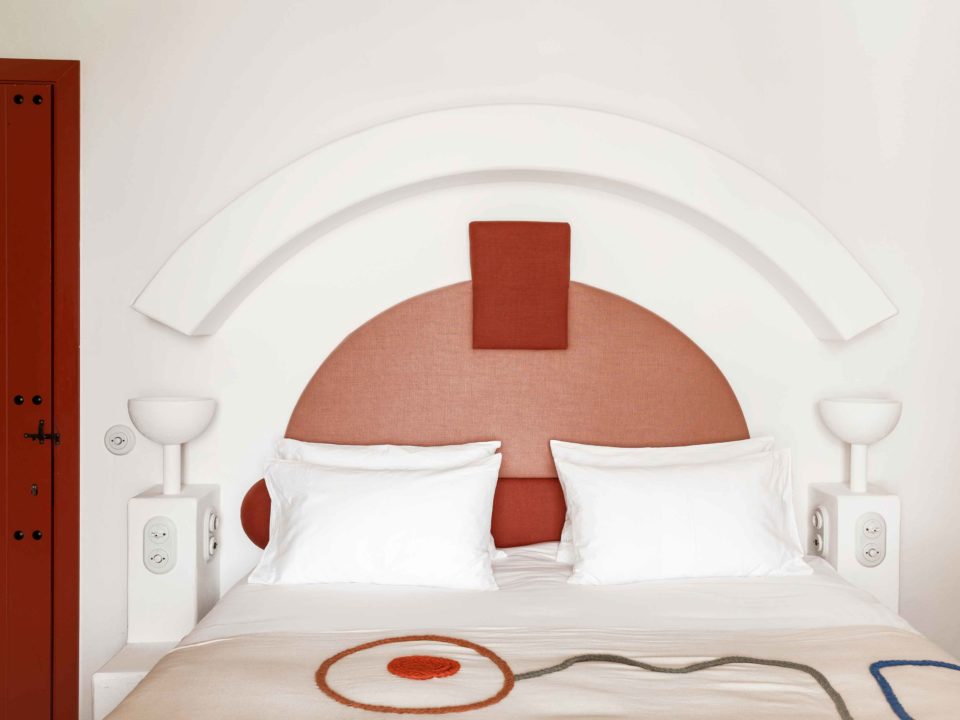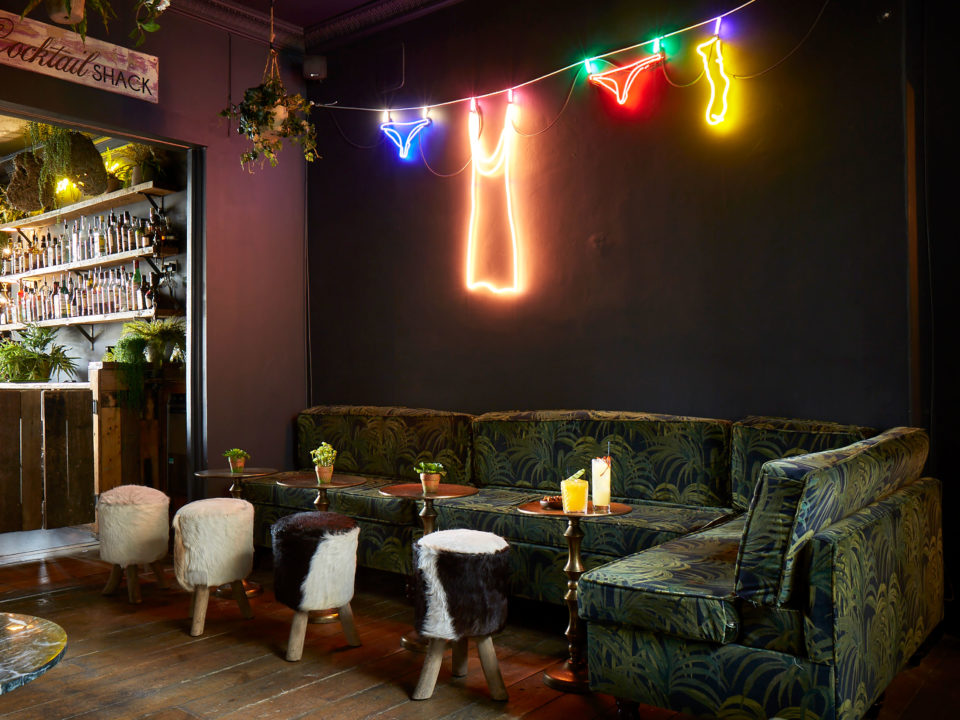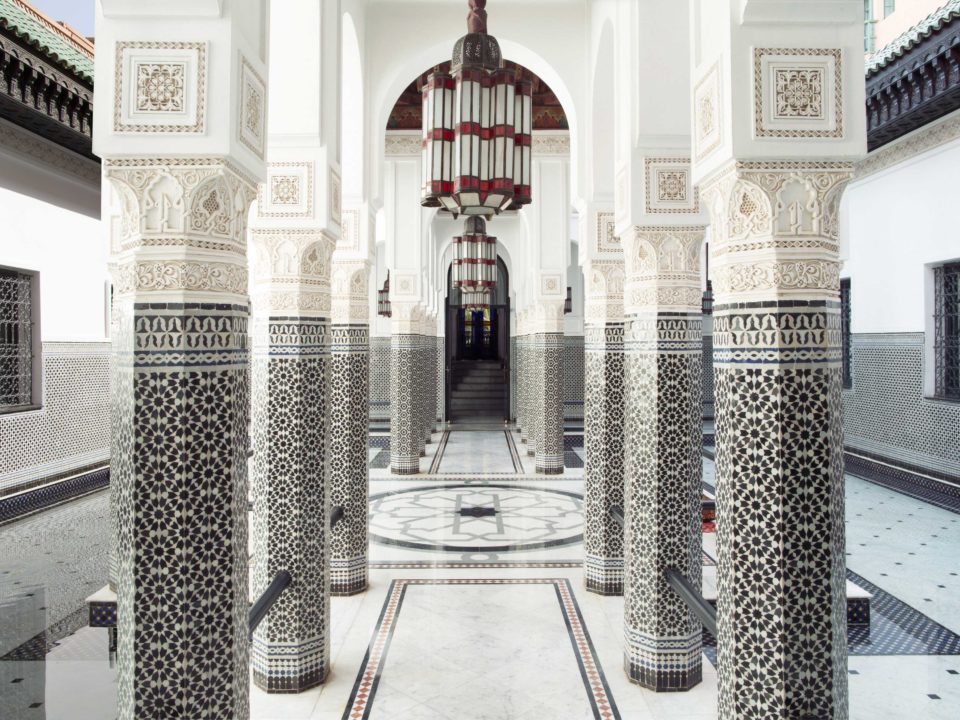God, we miss hotels. All of them, from the petite boutique stays where the owners hand you a plate of freshly made cookies on arrival as their dog mills about for petting, to the palazzos and villas you can swan about in as if you were a time-travelling contessa, to the fantasies played out in Maldivian villas and opulent desert encampments. Yes, right now we’d give our last slice of home-baked sourdough to have just dropped our bags and settled on Borgo Pignano’s terrace to drain several glasses of Chianti classico; and we’d swap our sweatpants for something much less comfortable if the promise of fizz and feasting at the Royal Champagne Hotel & Spa was on the cards. And so, as our suitcases lie dormant (for now) and the washing up accumulates, we’re reminded of all the reasons why a hotel can be so, so much more than just a place to lay your head. There are many, but first, our hymnal to great hotel design.
Roman gourmand Apicius had it right when he said ‘We eat first with our eyes’; similarly the best holidays are inspired by love at first scroll through, especially if an architect has been given free rein to go a little wild. Take the mirrored cube and bird’s nest hideaways at Sweden’s Treehotel and the frosty pick-up-sticks look of sister stay Arctic Bath; or perhaps the Sci-Fi container of Fogo Island Inn, rearing its head from the craggy landscape like a chic Star Wars AT ST Walker. Chilean wine estate Hotel Awa subverts expectations and maximises views with a Brutalist glass-and-concrete block, while desert stays Alto Atacama, Israel’s Six Senses Shaharut and Utah’s cleanly pared-back Amangiri give deference to the russet-hued sands or soaring bluffs surrounding them. On the outer edges of New Zealand, Annandale’s Seascape is a glazed, geometric cabin for two in quite literally the middle of nowhere (so much so, you need a helicopter or four-wheel drive to reach it). And the tropics, already overloaded with breathtaking backdrops, have unique stays such as Keemala in Phuket, An Lam Retreats in Vietnam and Bali’s Alila Villas Uluwatu to enhance palm-edged seascapes with teardrop-shaped hideouts on stilts, a full-moon bamboo shell of a restaurant, and a mod-nest pavilion cantilevered over the ocean, respectively. The sort of grand designs even Kevin McCloud would give grudging approval to.
And then there are the hotels with a light tread and a heavy impact, where you can feel like you’re doing your bit for the environment quite literally in your – soft, sound – sleep. Say, Mashpi Lodge, a hefty undertaking in Ecuador’s Chocó cloud forest, which was built by barely touching a hair on Gaia’s head. The structure was created in place with no-dig foundations and no trees felled, and the hotel runs on hydroelectricity. In Spanish gourmet hub San Sebastián, Arima Hotel is stringently sustainable yet flagrantly indulgent; its adherence to the Passivhaus movement means impressively low energy consumption: aluminium shutters dither back and forth to regulate temperature, lights flicker on and off as needed and a mechanical ventilation system preserves heat, making it a fiendishly clever stay. And, we’d be remiss if we didn’t nod to the hotels with lengthy stories to tell, those salvaged and preserved by owners with a clear vision, such as Palazzo Margherita, a grand residence lovingly restored in exquisite fashion by no other than The Godfather director Francis Ford Coppola, whose family hails from Bernalda where it’s set. Clearly a labour of love as the Coppola’s still use it as a holiday home (his daughter Sofia even got married here). And another whose frescos, decorative tile and colonnaded arches have been given new life is Palazzo Daniele, where Francesco Petrucci, founder of non-profit arts organisation Capo d’Arte has restored his family home to act as a glamorous galleria for his art collection with some elegant statement furnishings to boot.
Now, let’s go indoors… You could seek lockdown luxury by buying hotel-quality bedding and a couple of plush bathrobes and waffle slippers, but it takes a lifetime of fabric-swatching and paint picking to ensure hotels feel just right. Ask Kit Kemp, who has divined the stripe to chintz to chevron ratio in the heavily patterned Firmdale hotels. Her signature stay Ham Yard Hotel is an extrovert with colours that sing, and a whole lotta shouldn’t work but does somehow. Jacques Garcia shares Kemp’s no-holds-barred approach, but to sit in his melodramatic rooms at converted church L’oscar, former Oscar Wilde haunt L’Hôtel in Paris and Singapore’s the Vagabond Club – with preening peacock decals, reams of jewel-toned velvet and rouged bars propped up by gilded trees – is to slip into a reverie of Wong Kar-Wai-esque lustre. Fellow Gallic designer Dorothée Meilichzon brings French insouciance and cheeky translations of local culture to hotels for brilliant bar and bolthole makers the Experimental Group. Covent Garden’s Henrietta Hotel reflects the market’s pediments and porticos, and Menorca Experimental eschews white walls and wooden floors for Fauvist hues and curvaceous flourishes to look like a retro artist’s studio. We also long to be surrounded by Anoushka Hempel’s marbles and mirrors, Martin Brudnizki’s power-pomp and Camille Walala’s jazzy Pop Art as deftly executed at Mauritius’ Salt of Palmar.
But, let’s get down to – sometimes literally – brass tacks…it’s the personal touches that we really miss, say the Gio Ponti floor tiles and sputnik chandeliers that shine amid all the Rosselini-esque glamour and heavyweight mid-century artisans repped at Rome’s G Rough, or the cameos of The Shining carpet print in the hallways at the Standard, London. Or perhaps it’s the Andy Doig made neon washing-line at the Artist Residence Brighton, the Central American folk finds at Rancho Pillow in Texas’ top antiquing town, the cleverly contained storage space at Public New York or the onsen with the view at Aman Tokyo. Maybe the romantic rainbow-glass windows at Rajasthan’s Rawla Narlai, or even the little door that opens to reveal the toilet paper in JK Place Roma’s burnished bathrooms – an elegant solution to an awkward problem. And, last but not least, we love when hotel design authentically reflects the surroundings, the way Deplar Farm’s turf-roofed, dark-wood barns form a stark contrast to the tundra, how La Mamounia’s 20,000sq m of Zellige showcases local workers’ immense craft, or the way the Fleming hotel’s colours and fittings take inspiration from Hong Kong’s iconic Star Line Ferry.
Yes, we long to ditch the detritus of the day-to-day and return to these tailored-to-thrill rooms – to slide into crisp thread-count-blessed sheets, test the bounceability of the mattresses and mentally refurbish our homes with ‘oh, that Eero Saarinen table’, ‘maybe some of those velveteen cocktail chairs’ and ‘that 18th-century four-poster’. Because a beautiful hotel room isn’t just for 40 winks – it’s set dressing for honeymoon dot, dot, dots; minibar-fuelled wee-hour tête-à-têtes; whiled away afternoons; very exclusive parties and quiet meditation – but even moreso, it’s a place you want to spend as much time as possible in, even after months of staying indoors.
Featured image: Fogo Island Inn, Newfoundland




